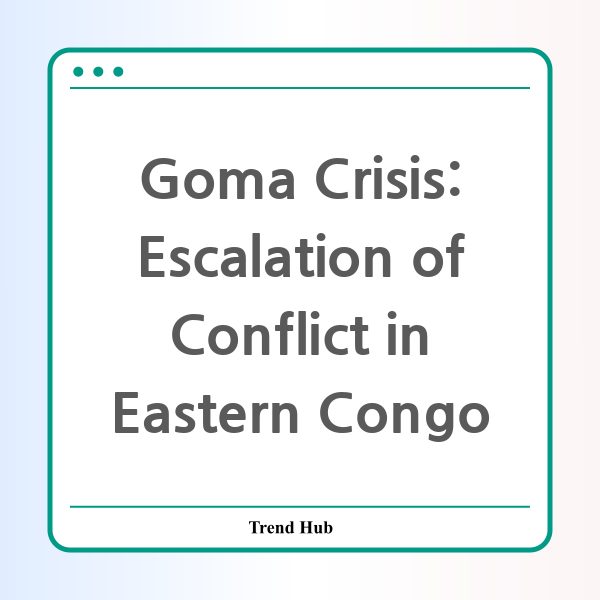* This website participates in the Amazon Affiliate Program and earns from qualifying purchases.

Goma Crisis: Escalation of Conflict in Eastern Congo
As tensions rise in the eastern Democratic Republic of Congo (DRC), the city of Goma stands at the epicenter of a conflict that has deep historical roots. What is driving this latest escalation, and how does it impact the local population already grappling with one of the world’s most severe humanitarian crises?
On January 26, 2025, residents of Goma witnessed a surge in violence when the ethnic Tutsi-led M23 rebels advanced into the city, reportedly seizing control amid chaotic scenes of gunfire and panic. Armed confrontations erupted near key locations such as the airport and the city center, escalating fears of further instability in a region that has been plagued by decades of conflict.
The M23 group, which has a contentious history linked to the aftermath of Rwanda’s 1994 genocide, claims to exist to protect the Tutsi population within Congo. However, their actions often serve to intensify existing tensions with government forces and Hutu militias, thereby complicating peace efforts in the region.
For decades, eastern Congo has been a battleground for various armed factions, with over 100 rebel groups operating within its borders. The M23’s latest offensive is not an isolated incident but rather part of a protracted struggle arising from historical grievances and geopolitical dynamics. Its emergence was precipitated by Rwanda’s backing, which has been met with international scrutiny and condemnation, especially from Western powers who have voiced concerns regarding Rwanda’s military involvement in the DRC.
As the fighting intensified, thousands of civilians were forced to flee their homes, joining the ranks of 3 million others who were already displaced within the eastern DRC. Reports of looting and confusion among residents further illustrate the dire humanitarian implications of this renewed violence. Images and videos emerging from the region depict chaotic scenes of families desperately seeking safety while facing the threat of armed conflict.
The international community has taken note of the alarming situation, with the U.N. Security Council convening emergency talks to address the situation. The response from Rwanda has been to dismiss allegations of contributing to the unrest, instead positing that its military presence is necessary for national security. Meanwhile, Congolese officials have rejected these claims, asserting their sovereignty and condemning external interference.
The implications of the M23’s advance into Goma extend beyond immediate military and humanitarian concerns. The region is rich in mineral resources, particularly coltan, which is essential for the production of electronics. Control over these resources has historically fueled conflicts, with both local and international interests vying for dominance.
With the dynamics of the conflict constantly evolving, what lies ahead for Goma and its residents? The potential for a sustained escalation of violence remains a significant concern, as does the ongoing plight of those displaced by the fighting. Efforts for negotiation and peacekeeping must be reinforced to ensure that the cycle of conflict does not perpetuate further humanitarian disasters.
In conclusion, the situation in Goma represents a complex interplay of historical grievances, international relations, and the daily struggles of ordinary citizens. It underscores the urgent need for a concerted global response to bring peace and stability to a region that has suffered far too long.
* This website participates in the Amazon Affiliate Program and earns from qualifying purchases.